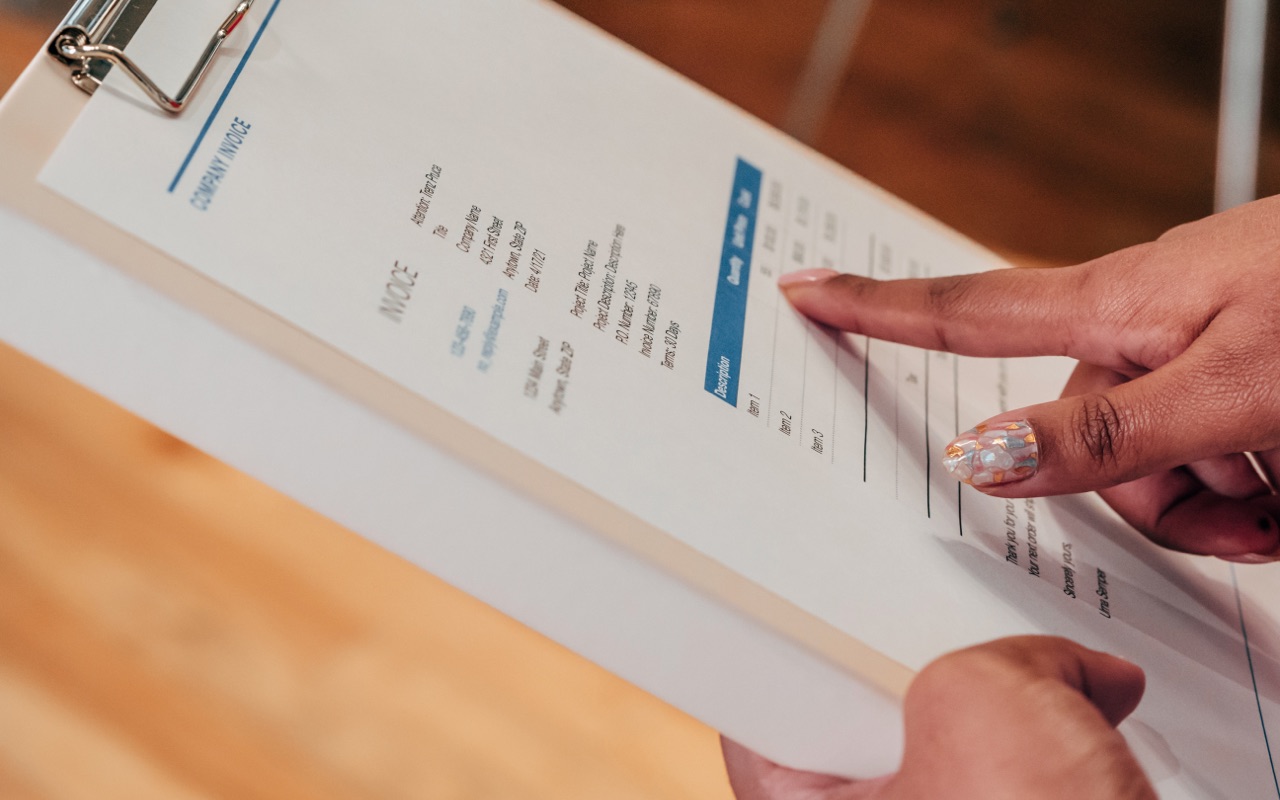Balance Forward Meaning Demystified: Financial Insights for SMEs
Understanding the concept of “balance forward meaning” is essential for small and medium enterprises (SMEs) to manage their finances effectively. The balance forward represents the total amount due, overpaid, or zero balance and serves as the foundation for financial planning. In this blog post, we demystify the concept of balance forward and provide insights that will empower SMEs to make informed decisions and maintain healthy financial practices.
From defining balance forward meaning to examining its evolution over time, this comprehensive guide will equip SMEs with the knowledge needed to navigate the intricacies of financial management. By the end, you will have a firm grasp on balance forward meaning, its importance in various financial scenarios, and how it can bolster your financial planning efforts.
Key Takeaways
- Balance forward is a crucial concept for tracking and managing customer accounts, indicating the total amount due.
- Understanding the difference between current and previous balances is essential to successful financial management.
- Balance forward accounting has evolved with technology, allowing businesses to manage their finances more efficiently and accurately.
Defining Balance Forward

The term ‘balance forward’ refers to a customer’s current balance on an account that has been carried over from the preceding statement to the current one. It conveys the total amount due, including interest payments, overpaid, or zero balance, making it an important aspect of invoices and financial management. Balance forward is essential for tracking the ongoing balance and account activity, aiding in the effective management of finances.
Gaining an understanding of balance forward can aid in avoiding non-refundable late payment fees. In cases of overpayment, balance forwards indicate that a refund is due. Furthermore, it is the responsibility of the customer to review the invoice for accuracy and ensure their accounts are up-to-date. In instances where expected funds are not obtained, the opening balance forward occurs, and the customer is liable for remitting the entire sum due.
Positive vs. Negative Balance Forward
A positive balance forward denotes the total amount of unpaid invoices or outstanding bills from a specific time period, indicating that the customer has an existing debt from prior transactions or billing cycles. On the other hand, a negative balance forward signals an overpayment. Recognizing the distinction between positive and negative balance forward is key to accurate financial management and maintaining a robust financial status.
In cases of negative balance forward, there are several approaches to address the overpayment. Here are some options:
- Provide the customer with a credit balance to be applied to their subsequent invoice.
- Refund the overpaid amount to their bank account.
- Issue a negative invoice charge to offset the overpayment against the next bill.
Balance Forward in Bank Accounts

The concept of balance forward in bank accounts refers to the previous balance, which is carried over to the current statement. For example, if one had $25,150.25 in their bank account at the end of 2022, the balance forward on a 2023 statement with dates from January 1 to December 31 would be $25,150.25. This approach allows customers to track their ongoing balance and account activity more effectively.
Balance forward in bank accounts serves to transition the previous balance from one statement or period to the next, thus facilitating the monitoring of the ongoing balance and account activity. A grasp of the concept of balance forward empowers customers to manage their finances more effectively and make decisions rooted in their financial history.
Balance Forward Statements: A Closer Look
A balance forward statement demonstrates the prior balance at the beginning, illustrating how the balance forward has been calculated. However, it is important to note that a balance forward statement may not accurately reflect the amount a customer owes presently, as it only applies to a specific time period. This distinction plays a vital role in managing accounts effectively and maintaining accurate financial records.
Differentiating between a balance forward statement and accounts receivable requires understanding that accounts receivable provides only the present outstanding balance. In contrast, a balance forward statement enumerates all payment activities over a specified period and displays the prior balance at the commencement. This information assists customers in tracking their financial activity and making informed decisions based on accurate data.
Payment Activities and Timeframes
Payment activities and timeframes form crucial parts of balance forward statements. These include:
- Beginning balance
- Current charges
- Payments received
- Adjustments
- Ending balance
Making payments in a timely manner is crucial, as it assists customers in monitoring their financial situation and ensures that no payments are missed.
For instance, a client may have a recurring payment activity with a due date of the 15th of each month. Alternatively, a client may have a payment activity occurring quarterly with a due date of the last day of each quarter. Having a clear understanding of payment activities and timeframes enables customers to manage their finances more effectively and steer clear of potential late fees or penalties.
Current Balance vs. Previous Balance
The customer’s current balance represents the amount owed for the current billing period, while the previous balance refers to the amount owed from the preceding billing period. The account’s current balance is a precise representation of your expenditure, including your previous statement balance and any recent transactions.
Comprehending the distinction between current and previous balances is essential for effective financial management. Grasping the difference between these balances allows customers to track their financial status accurately and make informed decisions rooted in their financial activity.
The Importance of Clear Balance Forward Presentation

It’s fundamental to present a clear balance forward on bills and invoices, so customers understand exactly what is required of them and where to seek further information. A clear balance forward facilitates a comprehensive comprehension of the preceding balance and any outstanding invoices or bills, assisting in tracking financial activity and forming judicious decisions based on precise data.
Providing customers with visual indicators on their bills, such as boxes and bold text, can help guide their attention to the balance forward and payment due dates. This allows customers to maintain their accounts in good standing and avoid any potential late fees or penalties.
Guiding Customer Attention
Visual cues, such as boxes and bold text, can assist in directing customers’ attention to the balance forward and payment due dates. By highlighting this information, customers can better understand their financial obligations and make informed decisions about their payments.
For example, the box at the top of an invoice typically presents the amount of the most recent payment, the date it was received, and the resultant balance in that sequence. By providing the consumer with a due date and payment arrangements, businesses can assist them in maintaining their accounts in good standing and avoiding any potential late fees or penalties.
Balance Forward and Financial Planning

Being aware of your balance forward is vital for financial planning, encompassing retirement planning, financial forecasting, and billing and payment planning. Balance forward accounting can be utilized in various ways, including:
- Retirement plans, such as 401(k) or analogous retirement plans, to monitor and anticipate participant balances over time
- Budgeting and financial forecasting to track and project future balances
- Billing and payment planning to ensure accurate and timely payments
By understanding and utilizing balance forward accounting, you can effectively plan and manage your finances.
Moreover, balance sheet roll forwards can be used as a tool in financial planning to project forthcoming balances, evaluate the financial wellbeing of a business or organization, and place them in a better position.
The purpose of balance forward in billing and payment planning is to monitor and control customer balances, thereby guaranteeing prompt payment of bills and improved financial organization. By incorporating balance forward into their financial planning strategies, SMEs can ensure accurate financial records and make informed decisions based on their financial status.
Managing Accounts Receivable and Payable with Balance Forward

You can employ balance forward to manage accounts receivable - the total amount a customer owes, and accounts payable - which pertains to payments owed to other companies. Managing outstanding debts and payments due to other entities is crucial for maintaining healthy financial practices.
Balance forward is an effective tool for monitoring accounts receivable and accounts payable, enabling businesses to accurately track their outstanding debts and payments due to other entities. By understanding and utilizing balance forward, SMEs can better manage their finances and maintain a positive financial standing.
Real-Life Examples of Balance Forward
Various real-life scenarios, such as bank account ledgers, invoices, and student tuition bills, can feature balance forward. In bank accounts, balance forward may include the balance of a prior month or year being carried forward. In invoices, balance forward may comprise unpaid invoices or delinquent bills. In student tuition bills, balances from a prior semester or year may be carried forward.
These examples highlight the widespread application of balance forward in different financial contexts. By recognizing and understanding balance forward in various scenarios, SMEs can effectively manage their finances and make informed decisions based on their financial activity.
The Evolution of Balance Forward Accounting
The origins of balance forward accounting date back to a time before the advent of computerized recordkeeping, when maintaining daily records wasn’t feasible. With the advent of technology, balance forward accounting has evolved, allowing businesses to track investments and improve invoicing efficiency. The use of software has enabled the generation of accurate financial statements and reports, making financial management more accessible and efficient for SMEs.
As balance forward accounting continues to evolve, businesses can benefit from its advancements to better manage their finances and make informed decisions based on accurate data. Adopting balance forward accounting practices can greatly enhance the financial management capabilities of SMEs, ensuring a healthy financial standing and sustainable growth.
Summary
In summary, understanding the concept of balance forward is essential for SMEs to effectively manage their finances and maintain a healthy financial standing. From defining balance forward to exploring its various applications in real-life scenarios, this comprehensive guide has provided insights that will empower SMEs to make informed decisions about their financial management.
By applying these insights, SMEs can harness the power of balance forward accounting to track investments, improve invoicing efficiency, and plan for a sustainable financial future. With a firm grasp on balance forward, SMEs can confidently navigate the complexities of financial management and lay the foundation for lasting success.
Frequently Asked Questions
Does balance forward mean I owe money?
The balance forward indicates the amount of money a customer owes from the past due bills or unpaid invoices. Therefore, yes, it does mean that the customer owes money.
What is an example of a balance forward?
The balance forward is the amount of money that has been carried over to the current statement, in this case, the $25,150.25 from the end of 2018.
How does balance forward work?
Balance forward accounting is a method that calculates an account's value by taking into account all contributions, withdrawals, forfeitures, investment income and transfers over a specified accounting period.
What is the difference between positive and negative balance forward?
A positive balance forward represents unpaid amounts owing, while a negative balance forward signifies an overpayment.
How can balance forward be utilized for financial planning?
Balance forward can be an effective tool for financial planning, such as retirement, forecasting, and billing. It can provide insight into long-term goals and plan out payments efficiently.
Join thousands of business-savvy entrepreneurs on our mailing list.
Curated emails that’ll help you manage your finances better.




